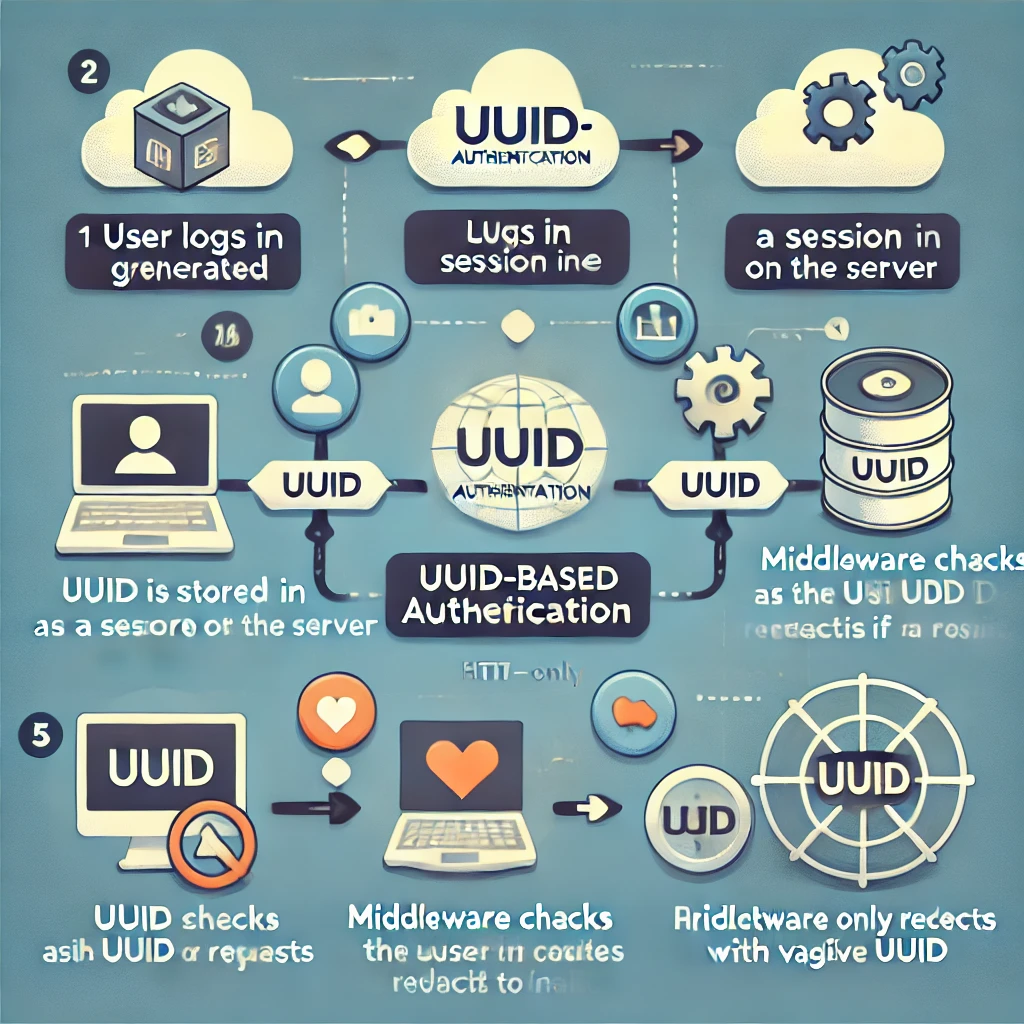UUID-based authentication is a session management technique that enhances user identification in web applications. Here’s a brief overview of how it works:
- User Login: When a user successfully logs in, a unique UUID (Universally Unique Identifier) is generated to represent their session.
- Session Storage: The generated UUID is stored in a session store (such as a Map or a database) along with user details, allowing the server to associate users with their UUIDs.
- HTTP-Only Cookie: The UUID is sent to the client as an HTTP-only cookie. This secure method prevents client-side scripts from accessing the cookie, enhancing security against cross-site scripting (XSS) attacks.
- Middleware Authentication: When the client makes subsequent requests, the middleware checks for the UUID in the cookie. If valid, it retrieves the corresponding user data; if not, the user is redirected to the login page.
- Protected Routes: Routes requiring user authentication are protected by this middleware, ensuring only users with valid sessions can access sensitive information.
This approach provides a simple yet effective way to manage user sessions without requiring complex database queries for every request, making it scalable and efficient for web applications.
Steps for Implementing UUID-based Authentication with Middleware
1. Generate UUID upon Login
- Generate a UUID when the user successfully logs in.
- This UUID will uniquely identify the user session.
2. Set UUID in Server-Side Session Store
- Store the UUID in a server-side session storage (e.g., a
Mapobject or a database) along with user information (like user ID or other details). - This allows you to retrieve user information later when the UUID is sent back to the server.
3. Send UUID to Client
- Set the UUID in a secure HTTP-only cookie, which will be automatically sent back to the server with each subsequent request.
- This cookie acts as the session identifier for the client.
4. Create Middleware to Authenticate Requests
- In your middleware function, retrieve the UUID from the request cookies.
- If the UUID is not found, redirect the user to the login page, as this means the user is not authenticated.
5. Retrieve User Data Using UUID
- Use the UUID to look up user information from the session store on the server.
- If a user is found, attach the user data to the request object (e.g.,
req.user) so that subsequent route handlers can access it.
6. Handle Cases Where UUID Is Invalid or Expired
- If no user is found for the UUID (e.g., it’s invalid or expired), redirect the user to the login page.
7. Protect Routes with Middleware
- Apply this middleware to any routes that require authentication. This ensures only authenticated users can access those routes.
Summary Flow
- Login: Generate UUID → Store UUID with user data → Send UUID in a cookie.
- Protected Request: Middleware retrieves UUID from cookie → Looks up user → Attaches user data if valid, otherwise redirects to login.
This setup enables basic session management with UUIDs without requiring a full database-backed session management system.
Step 1: Generate UUID upon Login
In your login controller, generate a UUID after user authentication.
Step 2: Set UUID in Server-Side Session Store
Define a session store and helper functions to set and get users by UUID.
Step 3: Middleware to Authenticate Requests
Create middleware that checks for the UUID and retrieves user data if valid.
Step 4: Apply Middleware to Protected Routes
Use the middleware in routes that require authentication.
